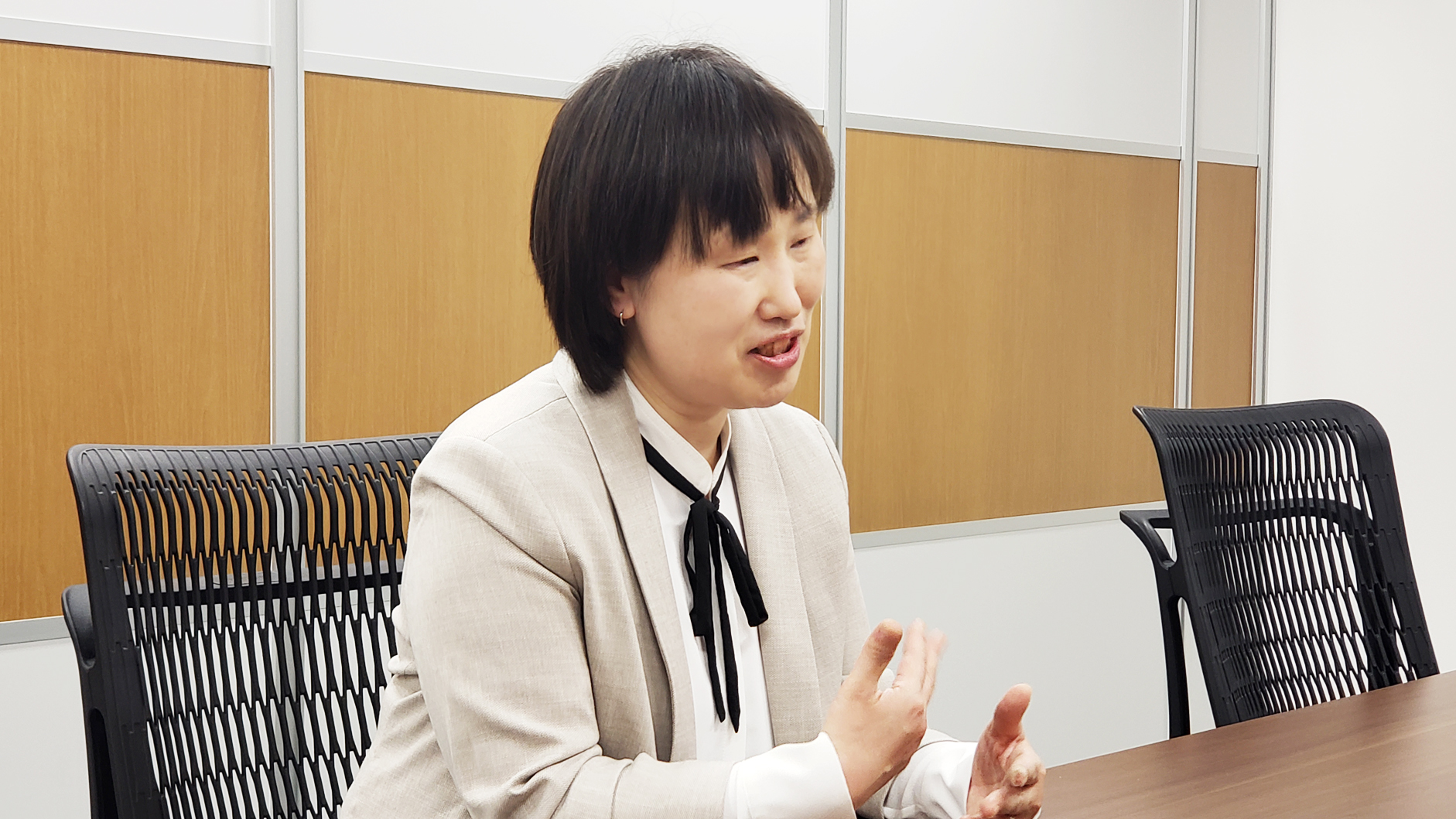Get to know our instructors
「If you just try, you can do it」
I try to draw out each group member’s strength and use it to help them
achieve their goals.
TAKAKO MATSUDAIRA

Profile
Ms. Matsudaira began her career in 1998 as a regular at one of the language schools in Tokyo, teaching Japanese to foreign exchange students. She was responsible for instructing groups of individuals from all around the world. Her teaching experience includes beginner to advanced level teaching, JLPT strategy, test-making and job interview skills training.
Summary
- 1.Throughout my career, I had an opportunity to teach group lessons and private lessons to foreign employees enrolled in Japanese firms.
- 2.I have experience teaching a class of more than 20 people, where half of them successfully passed N1.
- 3.Out of 19 people in my interview and business e-mails class, 12 has found employment.
- 4.Establishing trust between me and my students is very important to me, so I always try to stay receptive and let them open up.
1. Throughout my career, I had an opportunity to teach group and private lessons to foreign employees enrolled in Japanese firms.
Please tell us more about your working experience.
While I was still a full-time lecturer at a language school, besides teaching Japanese to foreign exchange students, I was in charge of JLPT prep classes, as well as group and private lessons for non-Japanese employees of the school’s partner companies. I was working mainly for a financial firm, a foreign-affiliated consulting farm and an insurance company. Depending on my students’ level and needs, I would put more emphasis on speaking, for ex. having more casual conversations, or polishing their business Japanese skills.
2. I have experience teaching a class of more than 20
people, where half of them successfully passed N1.
Heightening the students’ willingness to learn and their language
skills.
You are currently overseeing the Japanese education of 80 foreign nationals enrolled at a dispatch company specialized in engineering outsourcing. How did you apply the field requirements to your lessons?
The dispatch company’s initial request was for these individuals to
reach the level of Japanese that would allow them for efficiency at
work and most importantly, to pass the job interview.
Additionally, one of the requirements was acquiring either N1 or N2
JLPT certificate. Therefore, I focused on improving their speaking
skills and test preparation at the same time. To be more specific, I
divided my students by level into smaller groups of 20.
Even 20 people seem quite a lot for one group. Wouldn’t there be still some differences in the level? How did you organize the classes to correspond with each student’s potential?
Instead of matching the class level to the student’s level, I decided
to raise the bar a bit. Some of my students were already advanced
enough, so to make the things more difficult, I would ask them to
provide an explanation in Japanese to others who were still
struggling.
On the other hand, students who got assigned to the upper class were
previously attending either a language school or technical college and
had a vast knowledge of the Japanese language but lacked practice.
Thus, they were also divided into smaller groups and had for a task to
make several presentations to the others.

I see, you turn all your classes into ‘’place for growth,’’ while the
upper classes are especially a good opportunity for ‘’ the output’’ of
the knowledge the students already possess.
After just half a year of your guidance, 50% of your students passed
N1 and 60% of them accomplished passing N2. Given the consideration
that the average passing rate is 30%, your classes were a huge
success. Could you share some of your teaching secrets?
There are two points I keep in mind: setting short-spanned goals and
motivation control.
I would tell my students something like, ‘’we have … test in a few
months, so we have this much time to do this and this much time to
that.’’ Having clear goals also helps the students boost their
motivation.
When it comes to motivation control, some people can easily get
motivated and some just cannot keep their focus and lose their
motivation to study. However, if they must do it for someone else, it
often becomes a drive for them. Therefore, I often tease my students
by saying that I won’t talk to them unless they do their best since I
clearly know they have it in them to pass the test with great marks.
By telling your students when and what to do and choosing the right tone and the right words to show your passion, you help them keep their motivation to further improve their skills.
There is one more problem though. In a case where one class consists of many students, it is significant that they all look at me and listen carefully without disturbance. Therefore, I always observe my students’ behavior during class, and whenever I feel like they are starting to lose focus, I pause for a small chit-chat. For example, if we have a lesson on difficult kanji characters, I would tell them a story of how that character came to life and got its current shape. It spices up the class and creates some refreshment.
3. Out of 19 people in my interview and business e-mails
class, 12 has found employment.
Maintaining a steady stream of communication with the company
regarding the students’ progress.
Except for JLPT preparation and conversational Japanese, I’ve heard you also run a class on job interviews and business e-mails?
Yes, that is one of the things I was asked to integrate into my classes by the dispatch company I mentioned earlier. Thanks to the hard work each of my students has put into studying, 12 out of 19 found employment. Seeing them from time to time in class reminds me of how much they improved. Additionally, every month, I create an information sheet for the dispatch company making sure I include the changes in character, way of thinking, and their approach.

4. Establishing trust between me and my students is very important to me, so I always try to stay receptive and let them open up.
As the last question, can you tell us what’s the most important aspect of teaching for you?
I want to create a relaxed environment for my students. I never say they are wrong not to discourage them. I tell them I understand why they think it is this way and then proceed to explain why it’s not. For a person who is not a native speaker of Japanese, living in Japan surrounded by that language can cause enough stress. However, some of my students come to me after class wanting to share their experience or have a small talk, which only signifies that they indeed feel the need to communicate.
You just read an interview with one of our instructors, Ms. Matsudaira. She’s an expert in group teaching, making full use of each student’s potential. Many of her students successfully pass N1 and N2 JLPT. You can easily say her guidance skills are what makes her an exceptional teacher!
